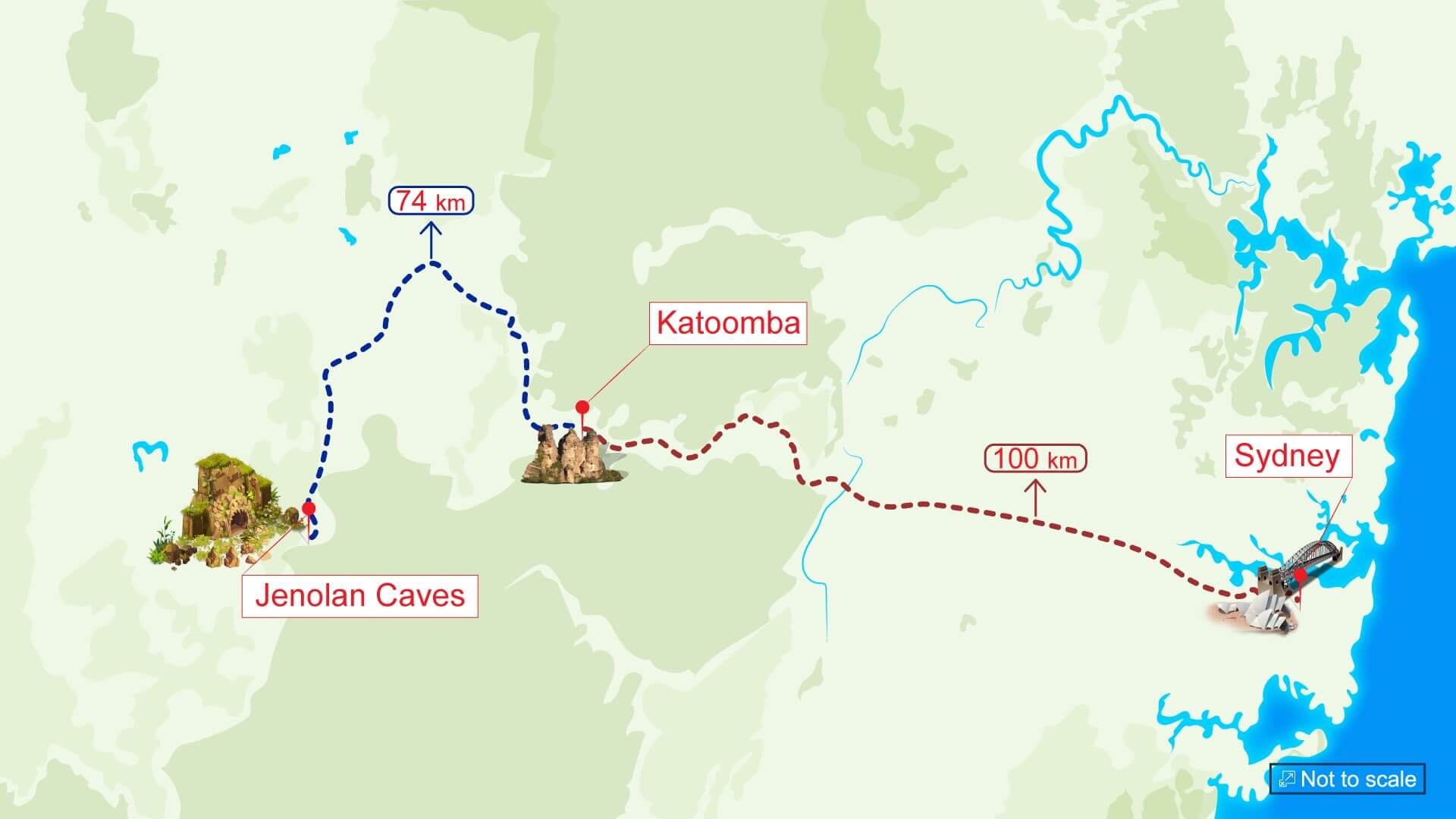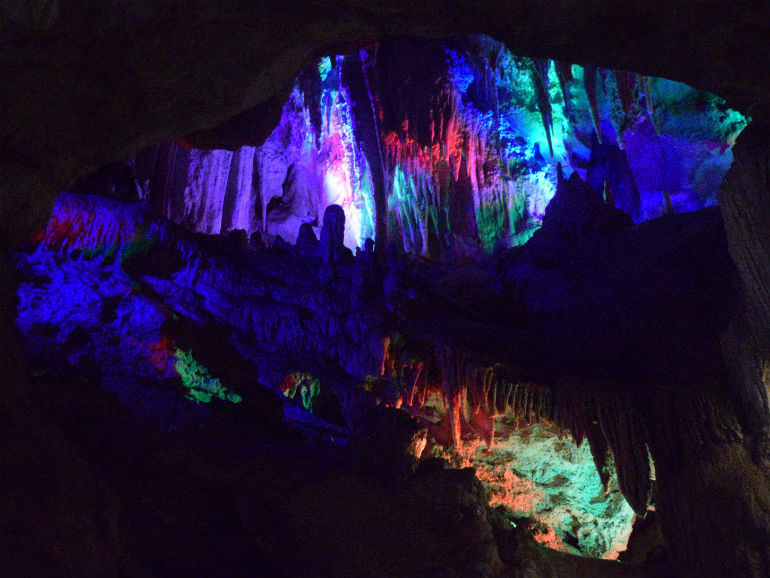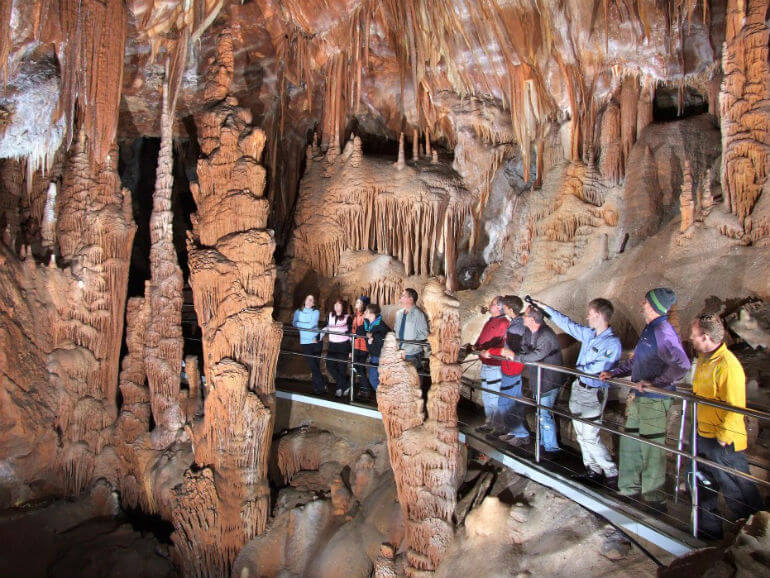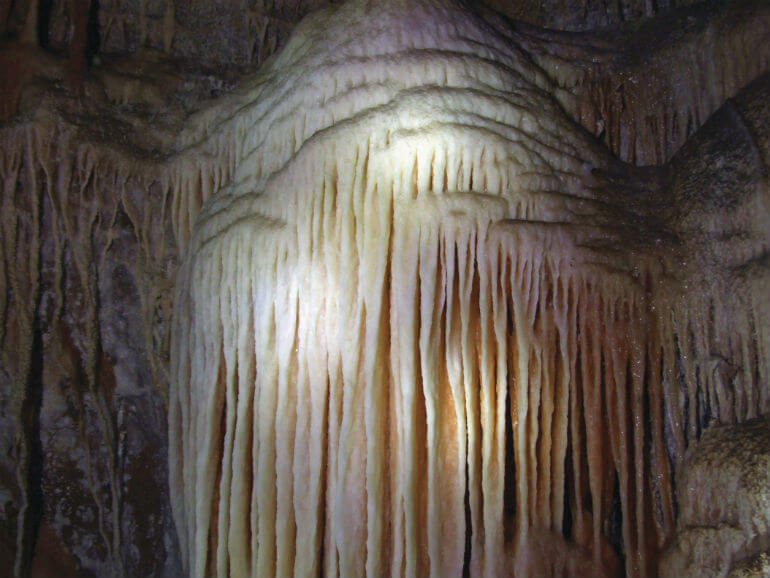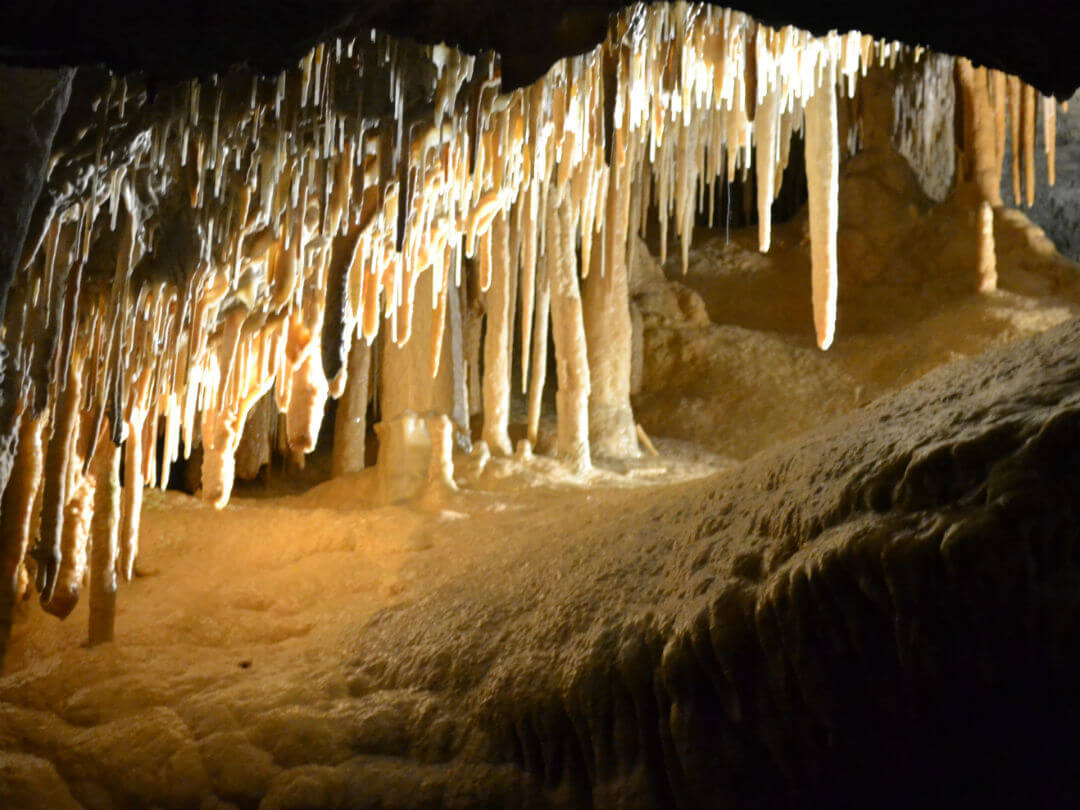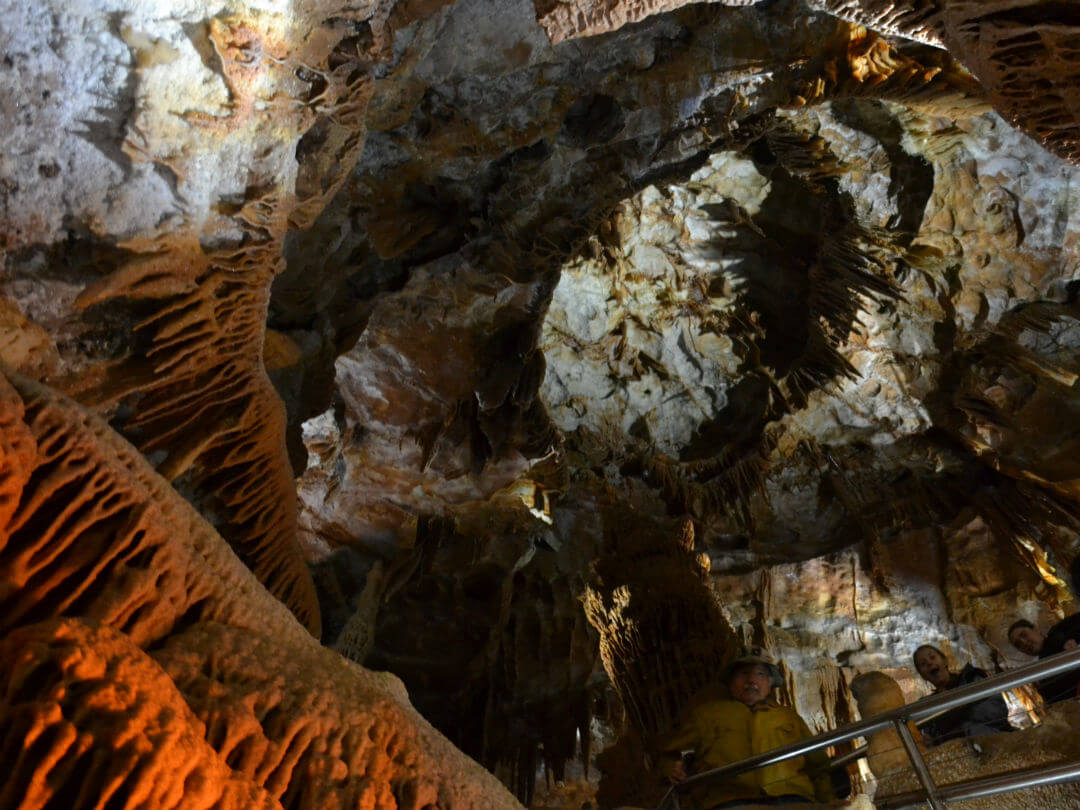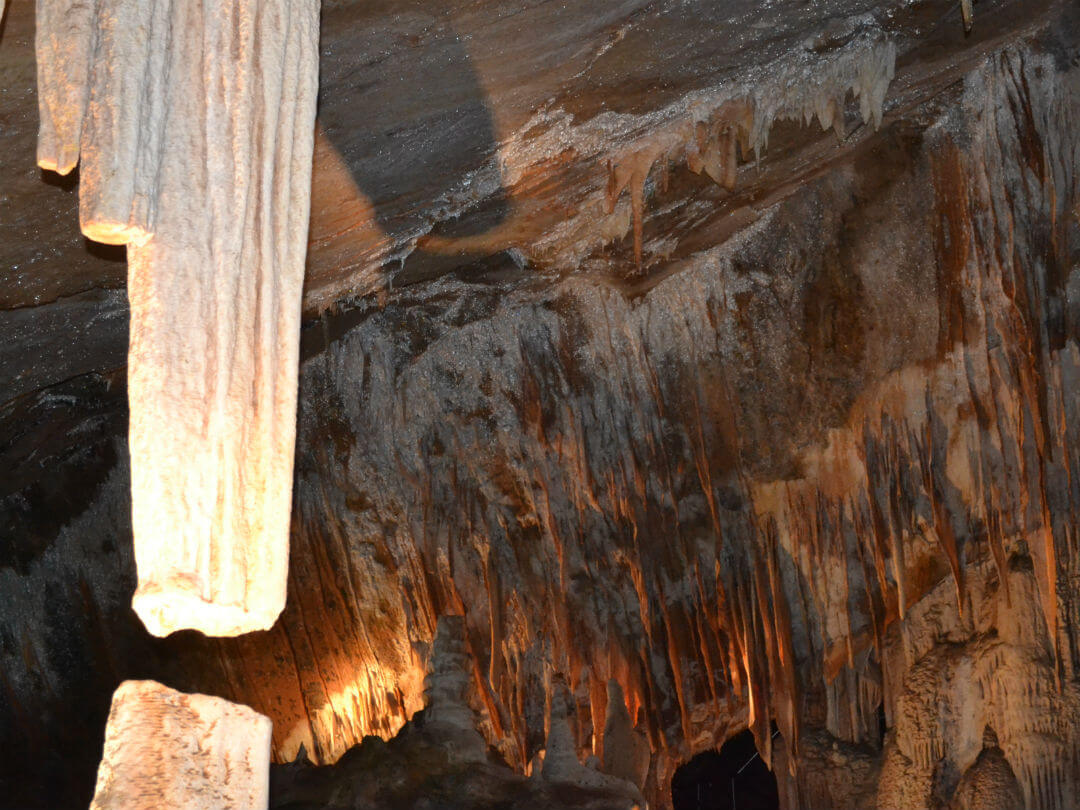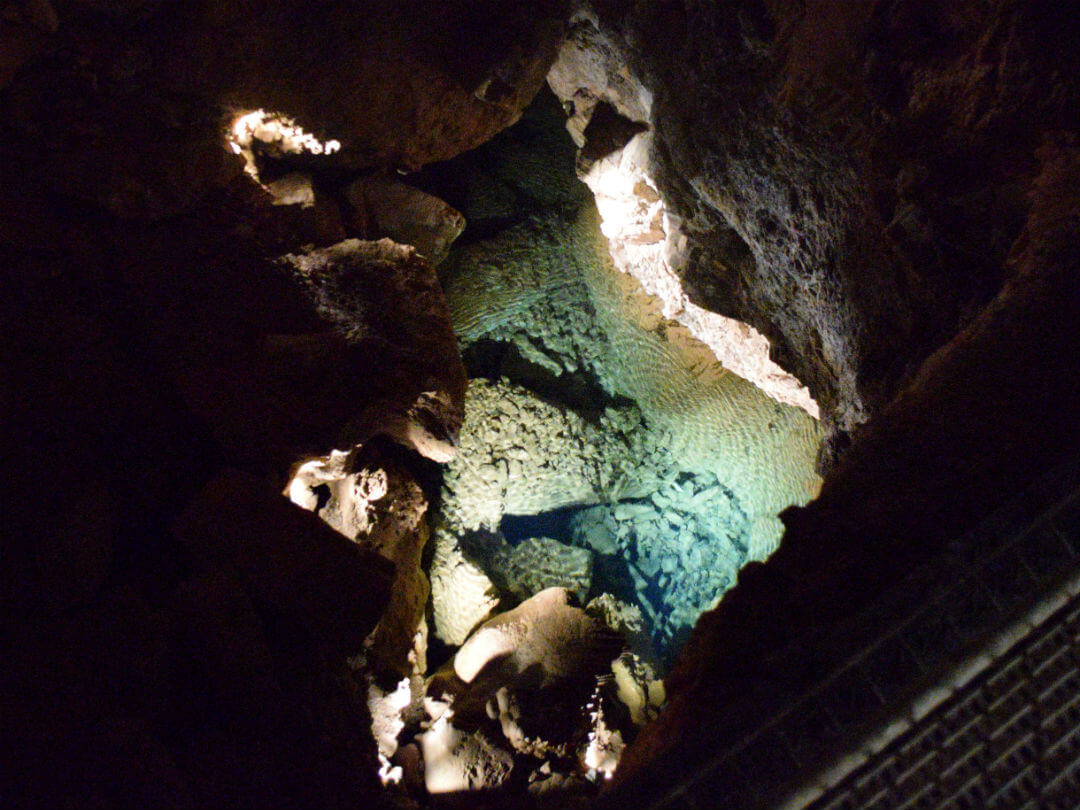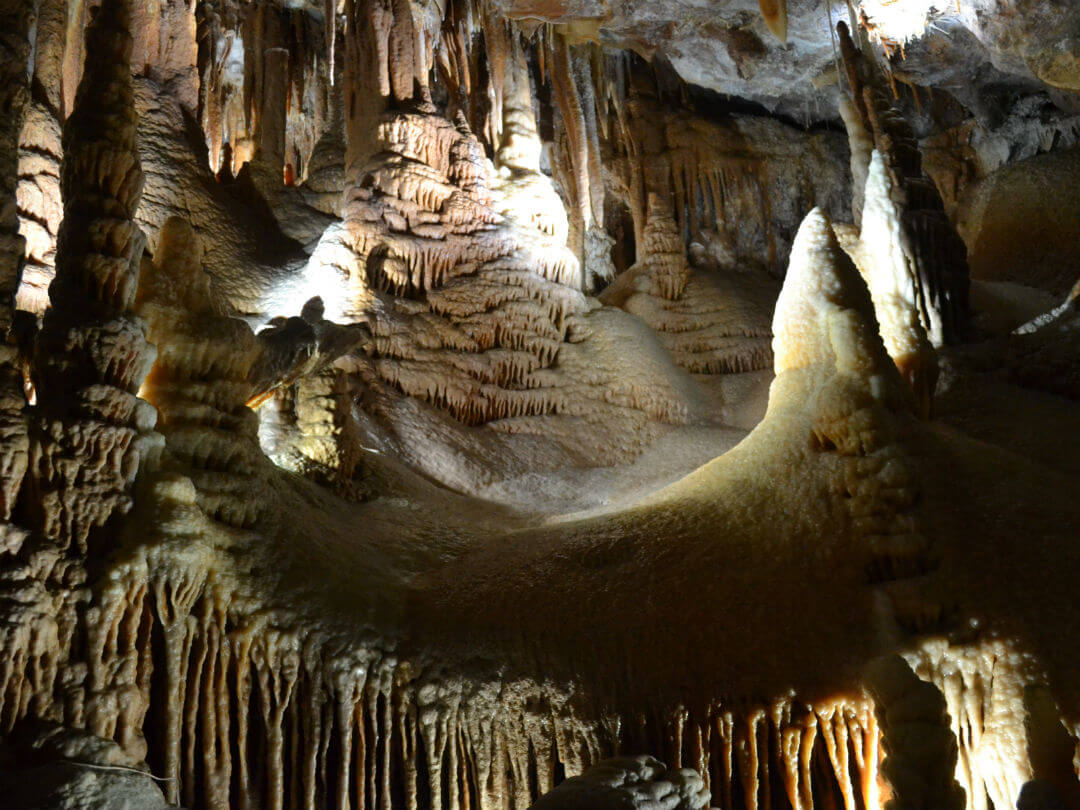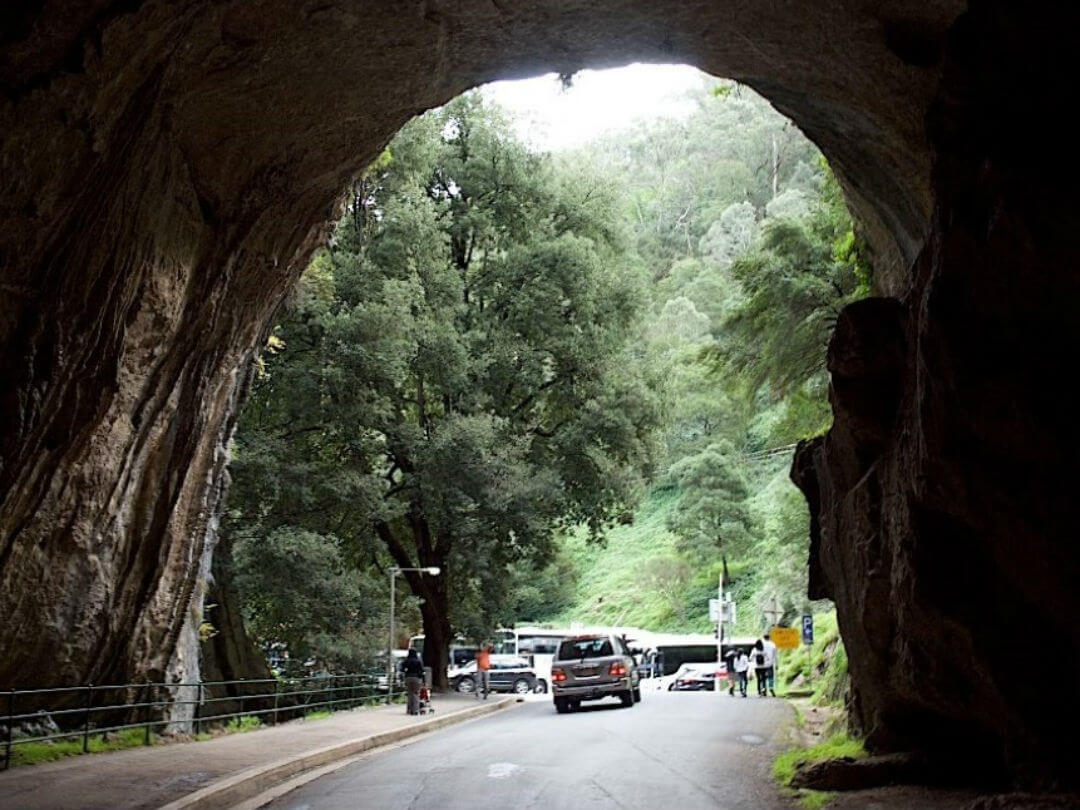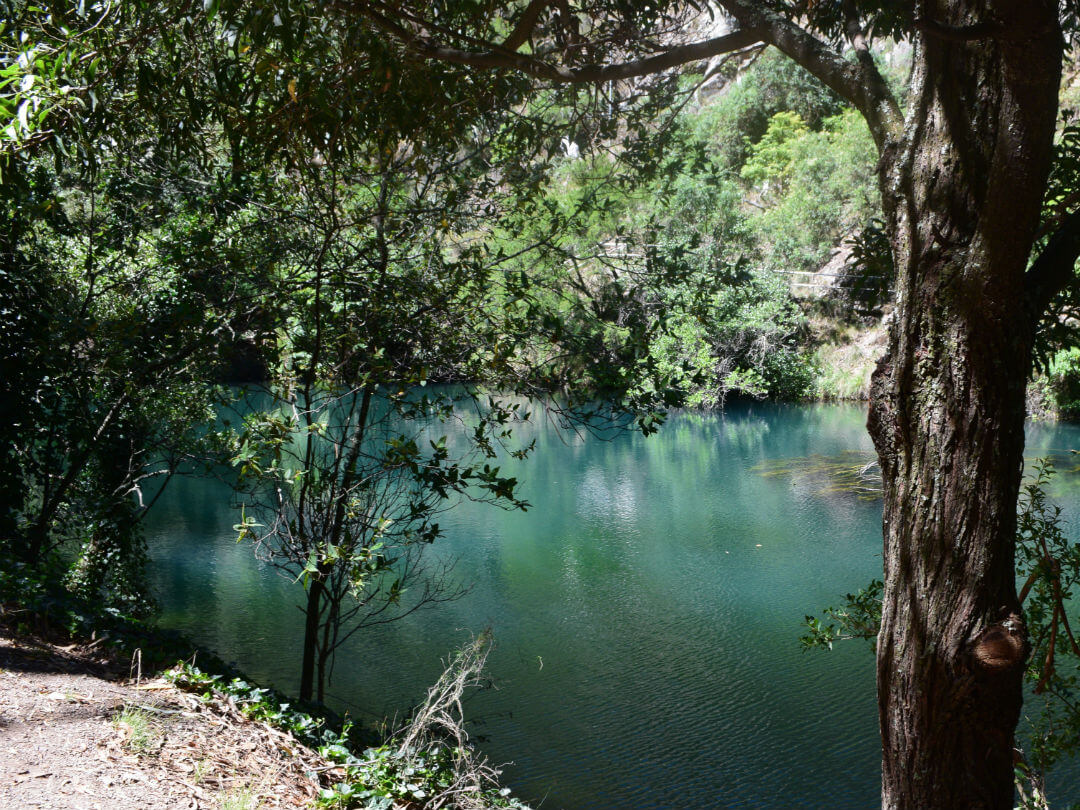Showcasing some of the Jenolan Caves most popular features, The Lucas Cave, is the most common cave visited and if you are a first time visitor to the caves, is an excellent introduction to the Jenolan caves systems. Although rated as one of the more strenuous caves, with over 900 steps, the guides make regular stops to show you the features of the caves so it is suitable for most fitness levels.
The first Europeans to discover the Lucas caves were Nicholas Irwin and George Whiting in 1860, and the name honours John Lucas, a politician who was instrumental in having the caves protected as a reserve in 1866.
At just over 54M the Cathedral is the tallest chamber at Jenolan Caves, and is used to host weddings and concerts. it is for this reason that at times the Lucas cave is unavailable and alternate caves are used on some guided tours. Normally the guides will play some music while in the Cathedral to show you the amazing acoustics of the Chamber.
The Broken Column is one of the most photographed features of the Lucas Cave. Sometime in the distant past the rock underneath the column subsided and split the column, amazingly the two section remain in near alignment.
For many people the highlight of the tour is the Underground River, which looks like a pool but is part of the river that formed the cave. Other features include the Mafeking Chamber, one of the most picturesque parts of the cave, the Terraces and the Bone Cave.
Tour time around 90 minutes
